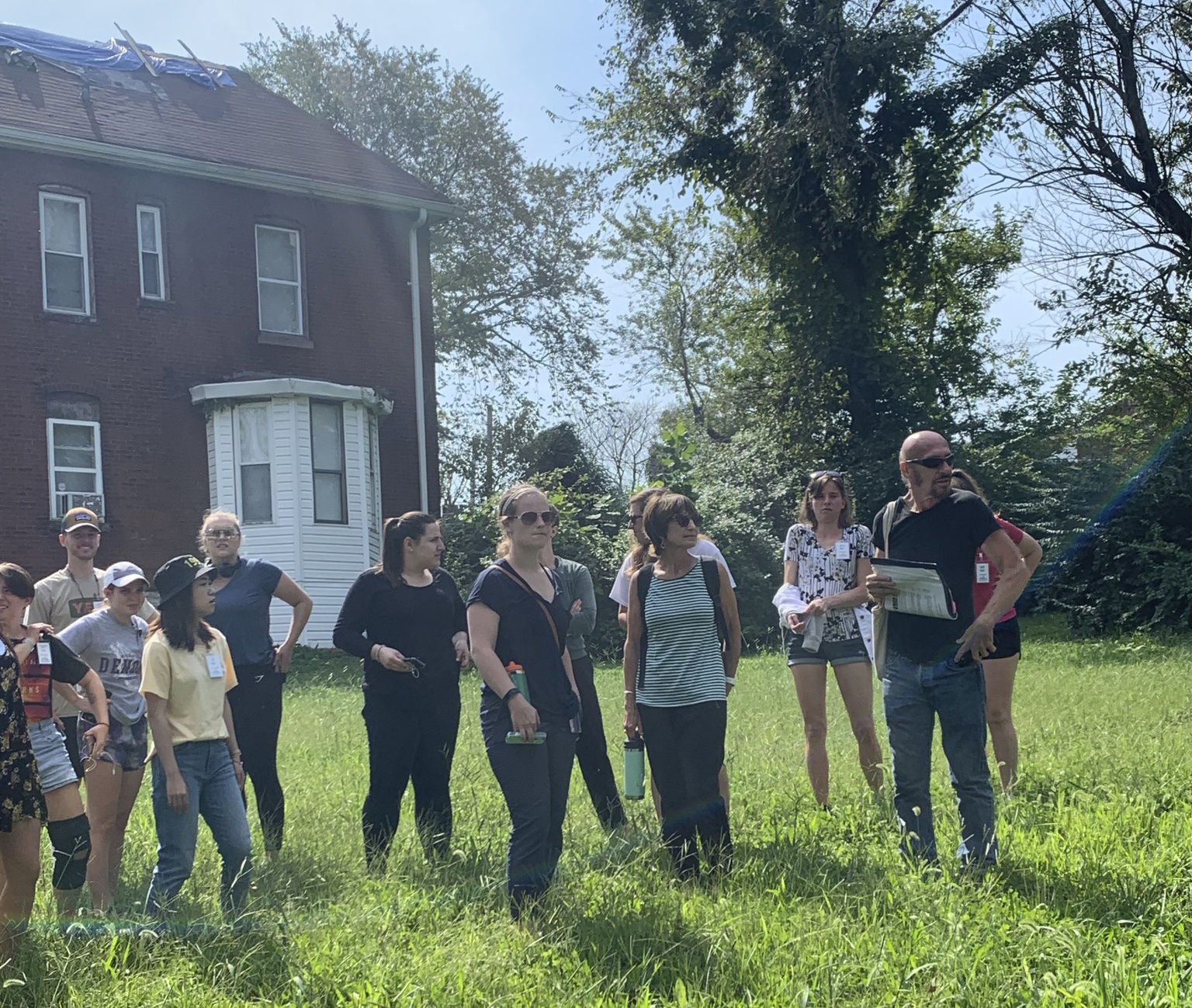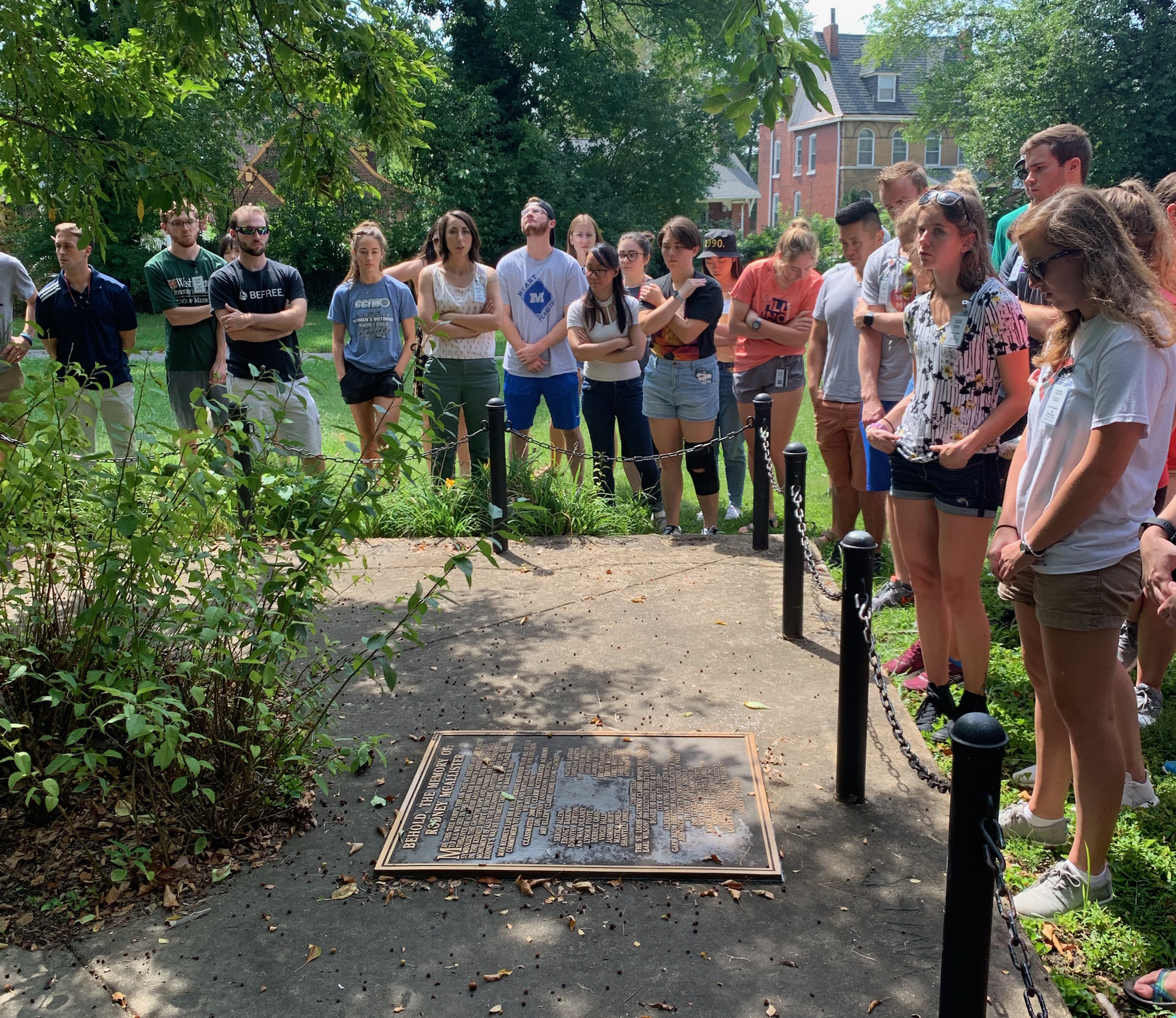Long-time St. Louisans still remember Pruitt-Igoe. In 1954, the first residents moved into the urban housing project. Developers predicted the apartments would create city revenue and energize the urban core with parks, playgrounds and shopping. It didn’t happen.
By the late 1950s, Pruitt-Igoe was in decline. People moved out as the site became known for crime, drugs and decay. In 1972, authorities demolished the 33 buildings. Now, the old Pruitt-Igoe site is part of a tour that teaches Washington University Program in Physical Therapy faculty, staff and students how social determinants affect citizens’ health.

During the summer, Program faculty and staff read Pruitt-Igoe: Images of America by Bob Hansman, Washington University Associate Professor of Architecture, before embarking on a city bus tour to see the site for themselves. “We wanted to better understand how social determinants affect people, specifically in terms of movement,” explains Dr. Steven Ambler, Associate Director of Professional Curriculum. “This is something we’ll be adding to our curriculum because it’s an important aspect of practice for future leaders in physical therapy.”
Dr. Todd Cade, Professor of Physical Therapy and Associate Director of Postdoctoral Fellowships, was on the bus as Hansman pointed out various examples of urban blight, illuminating areas that are little-known to socially and financially stable individuals. Seeing the memorial site for a child mauled to death by stray dogs in 2001 shocked Cade. “This really highlighted the direness of the living conditions and what the residents of north city deal with on a daily basis,” he says.

Cade adds that the tour helped him understand “teaching students about healthcare delivery is not ‘one size fits all.’ Many of our patients have different obstacles and priorities than others.” He also considered how students from more socioeconomically challenged areas face unique challenges that may affect their learning styles.
“We learned that many of the north city schools use outdated textbooks along with students navigating obstacles, such as food insecurity,” Cade says. “A keen understanding of our students’ background can help faculty optimize our teaching methods, or at least our empathy.”
About a month after faculty toured the urban sites, 89 new Program students embarked on the emotionally charged tour. “(Hansman) talked about people he knew dying from heart attacks, which were likely exacerbated by how stressful the neighborhood is. He talked about a child who died from a wild dog attack, and how we need to be accountable to the living children in that neighborhood now. He made it personal, at his own emotional expense, and I’m grateful,” says student Kat Omnes.
Student Matt Farthing adds, “The treatment for a patient living in poverty and a well-off patient is not necessarily going to be extremely different, however, how you approach the situation may be, and I had no previous perspective on how to approach people in different socioeconomic classes.”
By increasing awareness of vast inequities within St. Louis and discussing how they influence health, future physical therapists can better understand their role in connecting with the entire community, notes Dr. Gammon Earhart, Program Director. “The tour and book discussion stimulated lots of thought about how we as a program and as individuals can help to address the inequities within our region,” she says.